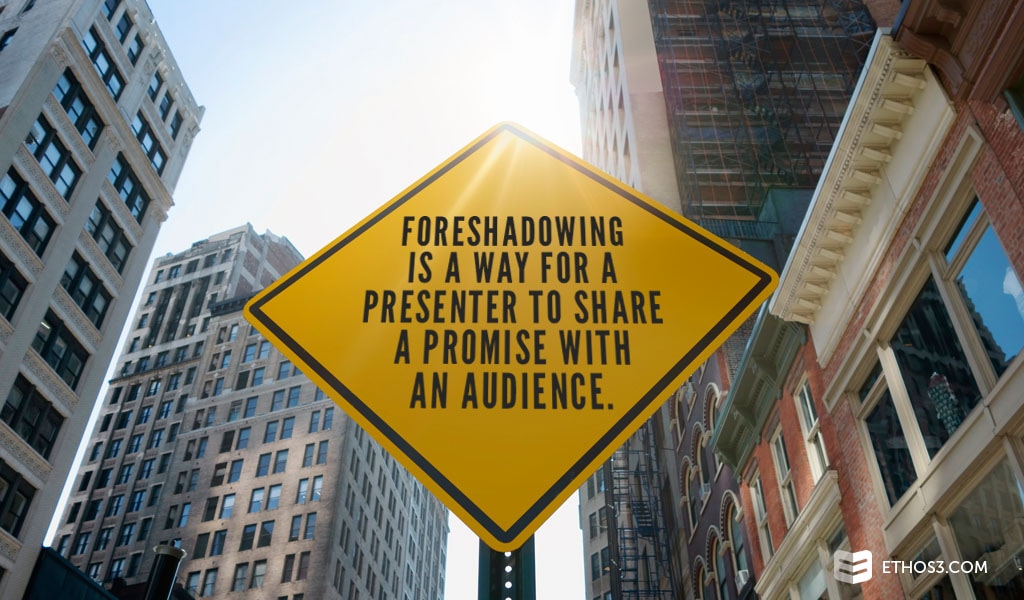“Salvation lies within.” That’s what Warden Nortan says to newly-minted inmate Andy Dufresne while handing him a Bible when he arrives at the prison. The scene near the beginning of Shawshank Redemption foreshadows the plot outcome – introducing future events, but withholding the details until the end of the movie. Authors, writers, marketers, and presenters use foreshadowing to give their audiences a taste of the main dish before ordering it without their approval. In long form storytelling, a creator might foreshadow the ending by describing a character’s mood, signaling an object, or providing information about an event. Shorter storytelling formats, like a presentation, require a distinct set of foreshadowing tactics. But first, why would a presenter need to foreshadow their message, when would they implement it, and how would they execute the element through copy and visuals?

Why Should Presenters Use Foreshadowing?
Do you remember visiting the amusement park or local fair with your parents when you were younger? The conglomerate of rides – each one with its own version of tossing or swirling you around a confined space. But, you could only ride some of the colorful structures, depending on your height. That devilish measuring stick established the rules of the game for every ride within the park. Foreshadowing serves the same purpose in a presentation. It lays the groundwork for what the audience is set to learn in the next 20, 30, or 60 minutes. Through foreshadowing a presenter tells listeners that they are in the right place and will hear about a topic they are expecting to hear about. Essentially, a presenter shares a promise with the audience.
When Should Presenters Use Foreshadowing?
Like any renowned literary or cinematic work, foreshadowing is most effective when it occurs at the beginning of a presentation. It’s the perfect way to set the stage and engage an audience from the get-go.
How Should Presenters Use Foreshadowing?
For a conservative presentation, I would recommend a more direct approach to foreshadowing. However, if your presentation is structured in a creative manner, a subtle approach could be the best option.
The Direct Approach:
For a quick dose of foreshadowing, outline your 3 main points within the first few slides of your presentation. A common method for displaying the core ideas involves inserting an agenda slide close to the beginning of your deck. Instead of listing out the ideas by bullet points, use icons or animation to enhance the visual appeal of the overview. Complement the design with a speaking script that shares only high-level information related to each point.
The Subtle Approach:
When executing a subtle foreshadow, allude to thematic elements that will appear in the rest of the speech. Use a story to address a theme that will become more and more important and pertinent as the presentation progresses. Develop the characters of the presentation narrative around the theme – even if the characters include the actual audience members, a product you are attempting to sell, or an organization you aspire to fund.
Let’s say you are delivering a sales pitch to consumers for your children’s toy which helps players exercise skills related to hand-eye coordination. Create your message based on a theme of success and growth, then open with a story that advances that theme. For example, foreshadow how your toy will improve the lives of other children by sharing a personal story about how a toy improved your own life when you were a child.
Already a master of foreshadowing? Try incorporating other literary devices and techniques into your presentations!
From the Ethos3 Archives:
3 Steps to Using Motifs in Presentation Content